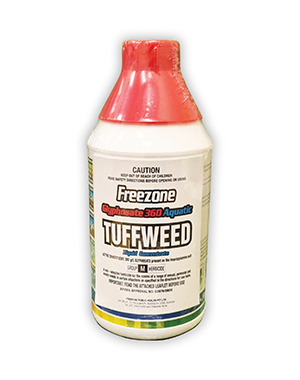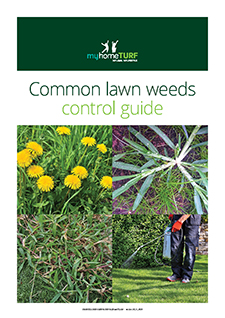What are Perennial Weeds?
Perennial Weeds are longer lived plants that can survive winter or regrow from roots, rhizomes or tubers in spring after a period of dormancy. Many weeds that grow from seed ...

 Oxalis can be a very difficult weed to kill in most lawn types.
Oxalis can be a very difficult weed to kill in most lawn types.
It is highly resistant to weak herbicide products, such as Weed and Feed types of weed killers, making it a difficult weed type to control.
With prior knowledge of the difficulty in killing Oxalis, and knowledge and planning in weed control practices, the job can be done very effectively and with the least amount of resistance from the tough Oxalis weed.
Oxalis weeds in lawns will require a properly concentrated herbicide in order to kill the weed completely.
Most of these herbicides will be marketed as Broadleaf herbicides, or may even be sold as herbicides for Bindi weeds. The good news is that these herbicides will kill many other lawn weed types as well.
WARNING: Buffalo and Kikuyu lawn owners will need to ensure they are buying a variety of Broadleaf herbicide that has been specifically formulated for their grass types. Applying the wrong herbicide can severely damage or kill these lawn types.
A concentrated Broadleaf herbicide can likely be bought from your local nursery or myhomeTURF’s online store.
A spraying bottle with a wand applicator will also be required, these can also likely be acquired online or in your local gardening store or nursery.
 Always follow the manufacturer’s instructions exactly.
Always follow the manufacturer’s instructions exactly.
Do not apply any lawn herbicides 1 week before or after lawn mowing. Do not apply herbicides to a wet lawn or when rain or lawn watering is expected within 3 days after application.
Do not apply herbicides to lawns that are under stress such as drought, or on hot weather days.
The herbicide is mixed inside the spraying bottle and diluted with water as per the manufacturer’s directions.
Affected areas of Oxalis are then sprayed with the herbicide. There is no need to do other lawn areas unless there are other weed types. Broadleaf herbicides are the most versatile of all herbicides and will kill many different weed types.
Because Oxalis is so difficult to kill, the weed may require several treatments, expect and plan for this in advance.
After the first herbicide treatment is completed, leave the lawn for 2 weeks to wait for results.
After 2 weeks, carefully walk around the lawn looking for Oxalis which hasn’t yet died.
Repeat the Oxalis herbicide treatment to any remaining remnants of the weed.
Leave the lawn for another 2 weeks, and repeat the process again if necessary.
If any Oxalis is still remaining 2 weeks after the third treatment, it is time to give the lawn a rest from the herbicide. Give the lawn an application of quality lawn fertiliser and ensure a good watering, and leave the lawn for 4-6 weeks before applying herbicide again.


Bow and Arrow 500mL is one of the most effective broadleaf liquid herbicides on the market. Bow and Arrow 500mL is suitable for Zoysia, Kikuyu, Couch and Buffalo grasses however transient discolouration may occur on Kikuyu, Carpet and Queensland Blue Couch lawns. Always read the safety directions and instructions on the product label before use.
SHOP NOW
Barricade 1L is a pre-emergent liquid herbicide that controls a wide range of weeds and is suitable for use on Zoysia, Kikuyu, Buffalo and Couch grasses. Always read the safety directions and instructions on the product label before use.
SHOP NOW
TUFFWEED Liquid Glyphosate 1L super concentrate is a non-selective herbicide that combats the toughest of weeds. Before use always check to see if your lawn variety is suitable for the use of TUFFWEED Liquid Glyphosate 1L. Always read the safety directions and instructions on the product label before use.
SHOP NOWKeep children and pets off the sprayed area for a week after treatment. Check specific manufacturer’s instructions for exact times to stay off a sprayed lawn. If necessary, section off the lawn and spray in 2 stages.
Only mix enough herbicide which is suitable for treatment, and thoroughly wash out spray bottles after treatment. Old herbicides can become concentrated or lose their effectiveness, so always mix a fresh batch prior to use. Products left in spray bottles can also clog up the spraying mechanisms.
Sign up for our Newsletter to receive your free guide.
